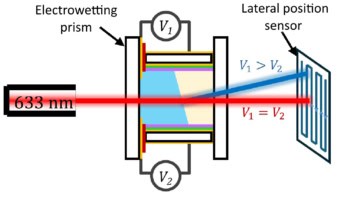The communications and textiles industries could benefit from tough glass-coated polymer fibres that can be woven into fabrics. Developed by Shandon Hart of Massachusetts Institute of Technology in the US and colleagues, the fibres reflect more light at certain wavelengths than the best metallic reflectors. The fibres can also be drawn out to different diameters to customize their optical properties (S Hart et al 2002 Science 296 510).
Man-made fibres are robust and versatile, and cheap to produce in large quantities. In contrast, optical devices known as dielectric mirrors are fragile and expensive. But Hart and colleagues have combined the resilience of synthetic fibres with the properties of an optical device known as a dielectric mirror to create a fibre that could be woven into fabrics to make radiation shields and filters.
Dielectric mirrors are made of alternating layers of two materials with different refractive indices. These layers give the mirror a ‘photonic band gap’, so that it reflects light in a certain range of wavelengths, but absorbs light outside this range. Dielectric mirrors are widely used in optical communications systems to reflect light of selected wavelengths.
Hart’s team made the fibres from arsenic triselenide, a glass with a refractive index of 2.8, and poly(ether sulphone), a polymer with a refractive index of 1.6. The researchers deposited a layer of glass on each side of a sheet of polymer, and rolled the glass-coated polymer sheet around a polymer core several times. This produced a fibre ‘preform’ with 21 alternating layers of glass and polymer, which was then drawn out into fibres with diameters ranging from 175 to 500 micrometres.
The diameter of a fibre determines the thickness of its dielectric layers, and therefore its reflectivity characteristics. This allowed the researchers to make fibres with various photonic band gaps. Hart’s team found that these band gaps arose in the infrared portion of the spectrum at the positions predicted by their calculations. This shows that the fibres contained few impurities, were uniform, and kept their optical properties at the high temperatures used in the drawing process.
The fibres are also sensitive to light approaching from any angle, in contrast with some dielectric mirrors that only respond to light that hits their surfaces at right angles.
Hart and colleagues hope that their fibres will be suitable for a wide range of applications. They even suggest that customized fibres could also be woven into textiles, acting as ‘bar codes’ that could be read to show that fabrics are authentic.



